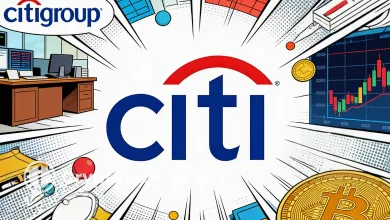Differences Between Centralized and Decentralized Exchanges

In cryptocurrency trading, exchanges play a pivotal role in connecting buyers and sellers. However, not all exchanges are created equal. Centralized exchanges (CEXs) and decentralized exchanges (DEXs) represent two distinct approaches to facilitating cryptocurrency transactions, each with its own set of advantages and drawbacks. In this article, we’ll delve into the fundamental differences between centralized and decentralized exchanges, exploring how they operate and their respective benefits and challenges.
What is a Centralized Exchange?
Centralized exchange, or CEX, is a third-party crypto trading platform where traders can buy and sell, deposit, and withdraw cryptocurrencies. CEX acts as a middleman between buyers and sellers and helps them complete their transactions. Additionally, centralized exchanges are regulated by the relevant authorities, meaning traders need to go through KYC and AML regulations before conducting any transactions. One of the important things about CEX is that they have control over your wallet and are responsible for safeguarding your funds. Some of the popular centralized exchanges include Binance, Kraken, and Coinbase.
How Do Centralized Exchanges Work?
Centralized exchanges work similarly to traditional exchanges, where traders create an account, deposit their funds, and place orders to buy or sell cryptocurrencies. Each crypto exchange has its own order book, which records all the buy and sell orders on that particular platform. Exchanges use this order book to match the orders. Furthermore, CEX charges fees for transactions, withdrawals, and sometimes even deposits.
Advantages and Disadvantages of Centralized Exchanges
Advantages
- Regulations: A centralized exchange must follow the rules and regulations to function properly and without any disturbance to the authorities. As such, traders can trust such exchanges, and if something goes wrong, they can ask the government for help.
- User-Friendly Interface: The platform is designed to be easy for both experienced and new traders to navigate.
- Liquidity: Centralized exchanges have a large user base, which means a lot of liquidity. This makes it easy to execute transactions safely and efficiently.
- Various Trading Pairs: CEXs offer various trading pairs for fiat-to-crypto and crypto-to-crypto transactions.
Disadvantages
- Crypto Exchange Downtime: Centralized exchanges may experience outages or shutdowns due to technical and regulatory issues. In these situations, traders are locked out of their accounts, and until the exchange comes back online, they won’t be able to access their funds.
- High Transaction Costs: Centralized exchanges charge higher fees for transactions.
- Centralized Control: If there is a single point of failure due to a hack, your funds will be compromised. Furthermore, the exchange manages the funds, and if they misappropriate them, traders won’t have any control over the result.
What is a Decentralized Exchange?
Unlike centralized exchanges, decentralized exchanges don’t have a central authority to maintain the wallets, execute orders, and more. Instead, traders have full control over their wallets, and transactions are executed using smart contracts. Furthermore, as they are permissionless, anyone can conduct transactions without filling in the KYC or AML regulations. Some of the popular decentralized exchanges include Uniswap, dYdX, PancakeSwap, and Curve.
How Do Decentralized Exchanges Work?
Decentralized exchanges (DEXs) are mostly dApps, which use peer-to-peer blockchain technology to trade without the need for an intermediary. They employ an automated market maker (AMM) protocol, which helps determine the price of assets through supply and demand. DEXs use liquidity pools, where traders provide liquidity by depositing pairs of tokens. Traders can instantly trade their coins for another, and the price is determined by the algorithm (constant product formula), which is based on the remaining supply of tokens in the pool. As traders exchange one token for another, the ratio of the tokens in the pool changes, affecting the price. The users who deposit their coins in the liquidity pool will receive rewards based on the amount of assets and the duration of the coin’s stay in the pool. Other than AMM-based DEXs, there are also order-book-based decentralized exchanges.
Advantages and Disadvantages of Decentralized Exchanges
Advantages
- Privacy: Transactions are anonymous, as there is no need to complete KYC or AML regulations. Furthermore, traders hold full control over the transaction because there is no intermediary or centralized authority to manage trades or personal information.
- Lower Fees: Decentralized exchanges charge lower fees than centralized exchanges as there is no middleman to take a cut, and users only need to pay gas fees to execute smart contracts.
- Security: Users have complete control over their funds and are less susceptible to hacks because they only have the private keys to open the wallet.
Disadvantages
- Complex Interface: DEXs are less user-friendly than CEXs and require users to have basic knowledge of crypto, including wallets, private keys, and gas fees.
- Lower Liquidity: They have lower liquidity for certain tokens, and if users want to conduct mass transactions using such tokens, they need to wait for a long time. Furthermore, these types of transactions can lead to slippage.
- Limited Protection: Since there is no central authority, users are on their own when conducting transactions. In case something goes wrong(fraud, user error), there is little chance of recourse because customer support cannot do much.
Difference between Centralized and Decentralized Exchanges
| Feature | Centralized Exchanges | Decentralized Exchanges |
| Control | They have full control over your wallet as both the users and the exchange share the private key. Users access their wallets through the exchange and trade their assets. | Only the users have the private key. They link their wallet with the exchange to conduct transactions. Furthermore, they don’t need any permission to conduct deals. |
| Security | Centralized exchanges store users’ funds in hot and cold storage. Day-to-day funds are stored in hot storage, while the majority of the funds are stored in cold storage. In case the exchange gets hacked, users can lose the funds stored in the hot wallet, and only in rare cases where private keys are mishandled would the cold storage be affected. | Although decentralized exchanges are exempt from large-scale security breaches, they are not entirely secure. If there are any vulnerabilities in the smart contracts or the liquidity pool, hackers could exploit them to hack the exchange. |
| Fees | In CEXs, fees can vary based on trading volume, asset type, transaction type, and withdrawal fees. | In DEX, transactions happen more slowly because of their decentralized nature. Additionally, users have the option to set gas fees, and if they set higher fees, transactions can happen at a faster rate, while lower fees may result in longer waiting times because miners prioritize transactions at higher fees. |
| Regulation | When trading in CEXs, traders must comply with various regulations, such as KYC and AML. Furthermore, the exchange operates based on set rules, resulting in greater user protection, but this also restricts various services. | DEXs work outside of the predefined rules, resulting in greater freedom at the cost of reduced legal protection. |
| User Experience | CEXs are user-friendly and are suited for both experienced and novice traders. They offer all types of traders available in crypto, as well as various tutorials and guides in case users have any doubts about how to use them. | DEXs are a little less user-friendly to novices because of their obsession with security and control. |
| Speed | Transactions within centralized exchanges can happen instantly because of their large liquidity and many traders. | In DEX, transactions happen slower because of their decentralized nature. Additionally, users have the option to set gas fees, and if they set higher fees, transactions can happen at a faster rate, while lower fees may result in longer waiting times because miners prioritize transactions at higher fees. |
Conclusion
Both centralized and decentralized exchanges offer distinct advantages and disadvantages that cater to different types of traders and their preferences. Centralized exchanges provide user-friendly interfaces, higher liquidity, and regulatory compliance, making them appealing to beginners and those seeking convenience. However, they come with risks, such as potential hacks and a lack of control over funds.
On the other hand, decentralized exchanges empower users with full control over their assets and greater privacy, appealing to those who prioritize security and autonomy. Nevertheless, they can be complex for new users and may suffer from lower liquidity and slower transaction speeds. Ultimately, the choice between a centralized and decentralized exchange depends on individual needs, risk tolerance, and trading strategies. As the cryptocurrency landscape continues to evolve, traders must weigh these factors carefully to make informed decisions that align with their goals in the dynamic world of digital assets.




